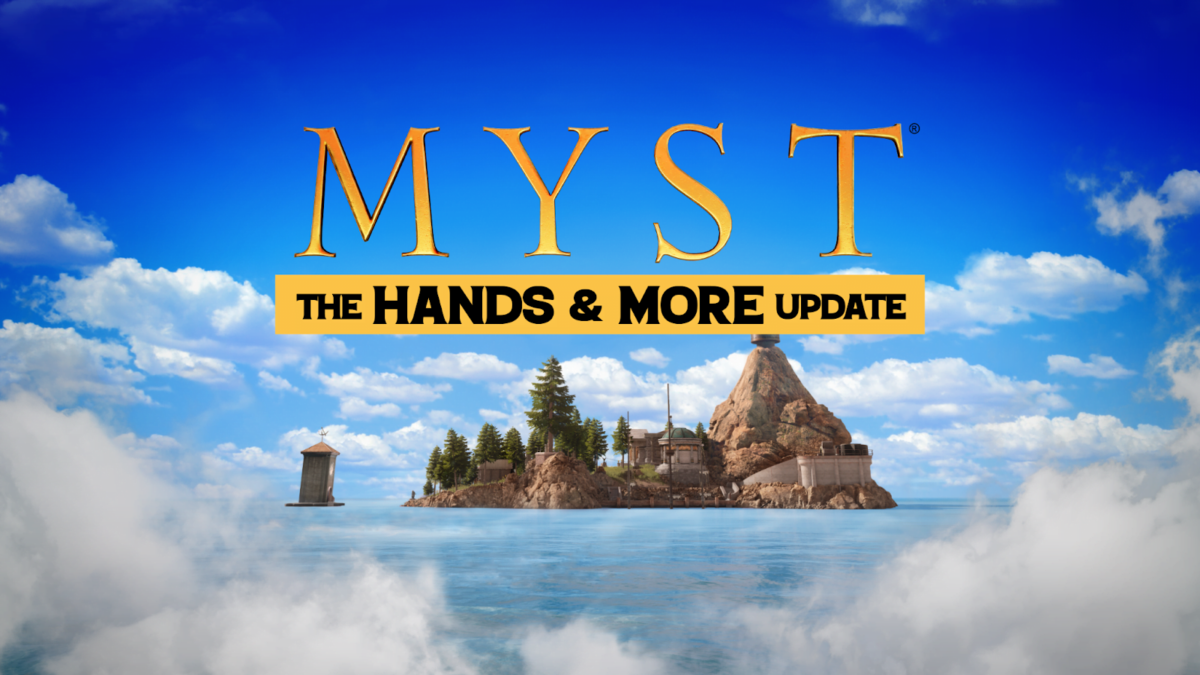Myst VR makes a future-dream from 1993 come true

In the 90s, Myst surprised with fancy but static render graphics from the CD. In 2022, you can stand in the real-time game world yourself and control it with your own hands through Myst VR.
Cyan's adventure game Myst was one of the most advanced games of 1993 - with the CD as a huge storage medium and lavish render graphics. At the time, however, I would never have dreamed of one day standing in this world myself, instead of just sitting in front of the monitor and solving mysterious puzzles.
Almost 30 years later, this dream of the future is possible thanks to Virtual Reality. With Meta Quest 2, flip levers, turn the pages of books, and explore the deserted island. Do all this and more, all with your hands. Controllers are still supported and switching between input devices is smooth.
Some actions are controlled with gestures. As soon as you extend your index finger, you run forward. The rest of the hand should be formed into a fist. The alternative teleportation works similarly. Simply point to a target, place the teleport ring and pull back your finger. You will then "beam" to that location.
Hand tracking hurdles on Meta Quest 2
In the "Oculus for Developers" blog, Cyan's Development Director Hannah Gamiel goes into more detail about the intricacies of gesture control - and many problems and necessary "code cheats" during development.
In Unreal Engine 4.27.2, there was "only some basic code" for Meta's Quest 2 hand tracking. Extended index or middle fingers were initially not recognized reliably enough. In Unity, however, some libraries for gesture recognition and physics libraries are already available. The team first spent time developing similar basics for the Unreal Engine. They started with cleanly recognized gestures like "thumbs up" or the already mentioned extended index finger.
Given these development hurdles, you shouldn't expect perfect hand controls. After all, Meta Quest 2's four built-in tracking cameras weren't designed for that purpose at all, but merely to detect the environment and the controllers. Only a later update added hand tracking. We have already taken a closer look at some VR games with the improved hand tracking 2.0.
Finally, a note function
The Myst update also contains a few other new features, including the note function that was sorely missed at launch: You can now take screenshots of important numbers or book pages and the like directly in the game. Previously, this required a cumbersome switch to the system menu.
Some original movie snippets have also been added: If you like, you can switch to the eccentrically staged film clips of Cyan founders Rand and Robyn Miller during video sequences in the future. At that time, such "Full Motion Videos" (FMV) were still something special in games.
Also new are cloud saves and the option to align the running direction with the orientation of a controller. Another somewhat surprising change concerns the game's file size: It is now only around 5.5 gigabytes instead of 9.5.
By the way, the current Myst remake has also been available for the PC for almost a year. On Steam, the graphically improved hybrid version supports both VR headsets and the monitor, but no hand tracking.
Those who don't look at Myst through a rose-tinted headset will judge the game more soberly: The old-fashioned, unforgiving puzzle design carried over from the original no longer does justice to modern game design.
On the puzzling trip through different eras, you'll come across some bizarre gadgets. Their functionality can often only be unraveled thanks to well-hidden clues or, where it usually ends, a walkthrough. But this is part of the nostalgic charm.
Note: Links to online stores in articles can be so-called affiliate links. If you buy through this link, MIXED receives a commission from the provider. For you the price does not change.